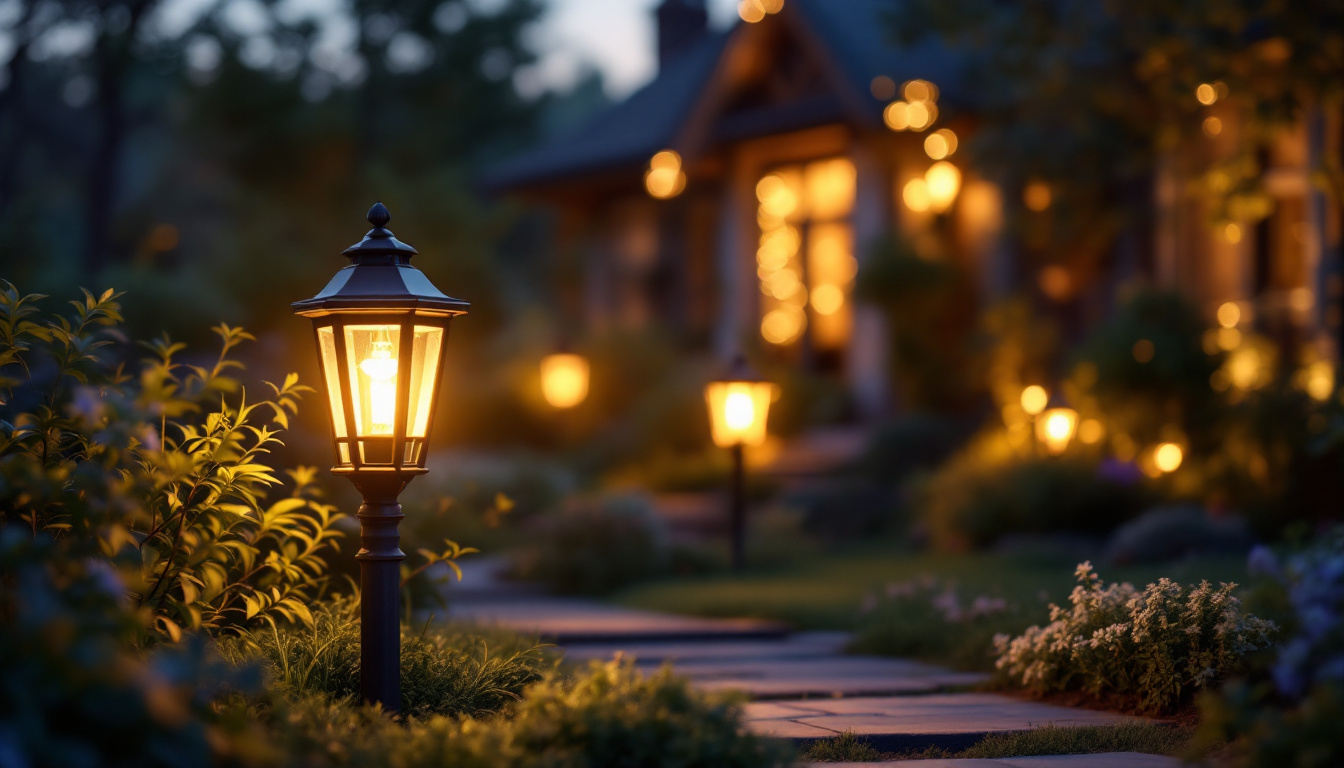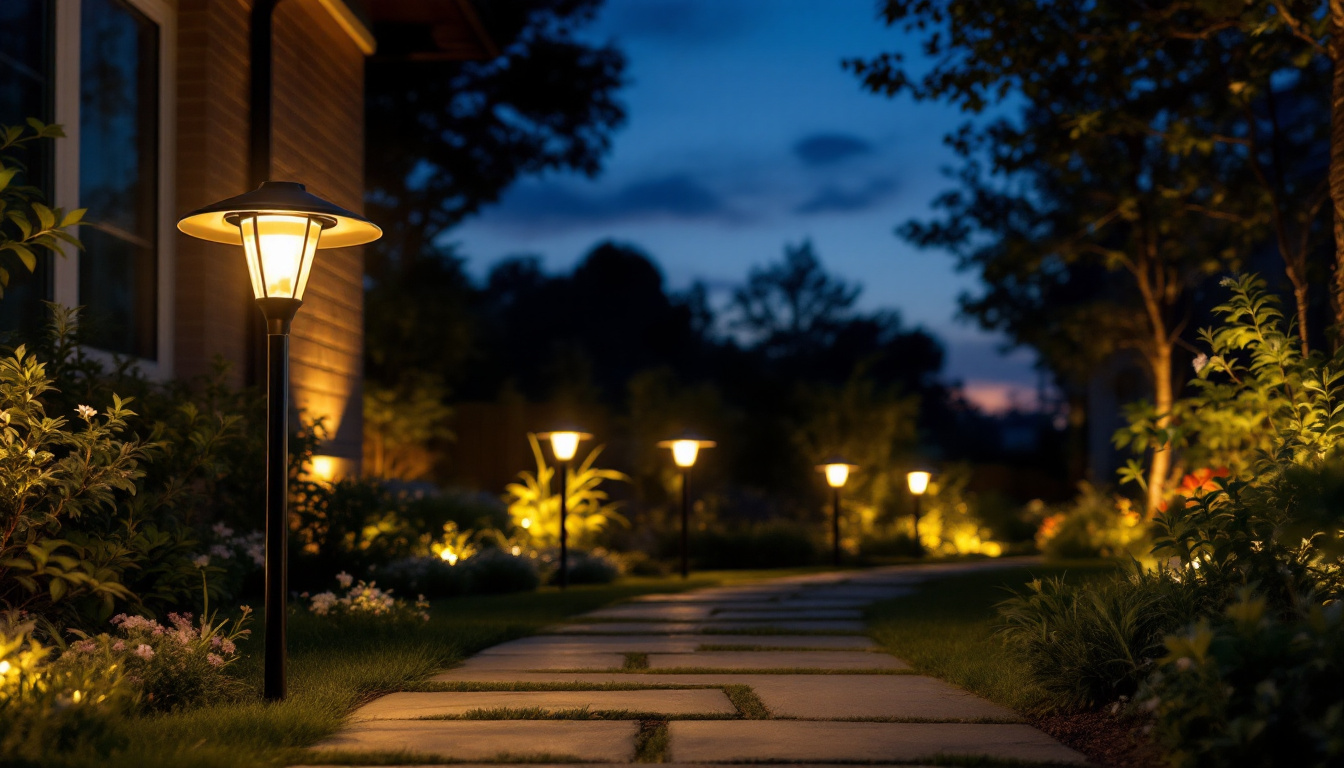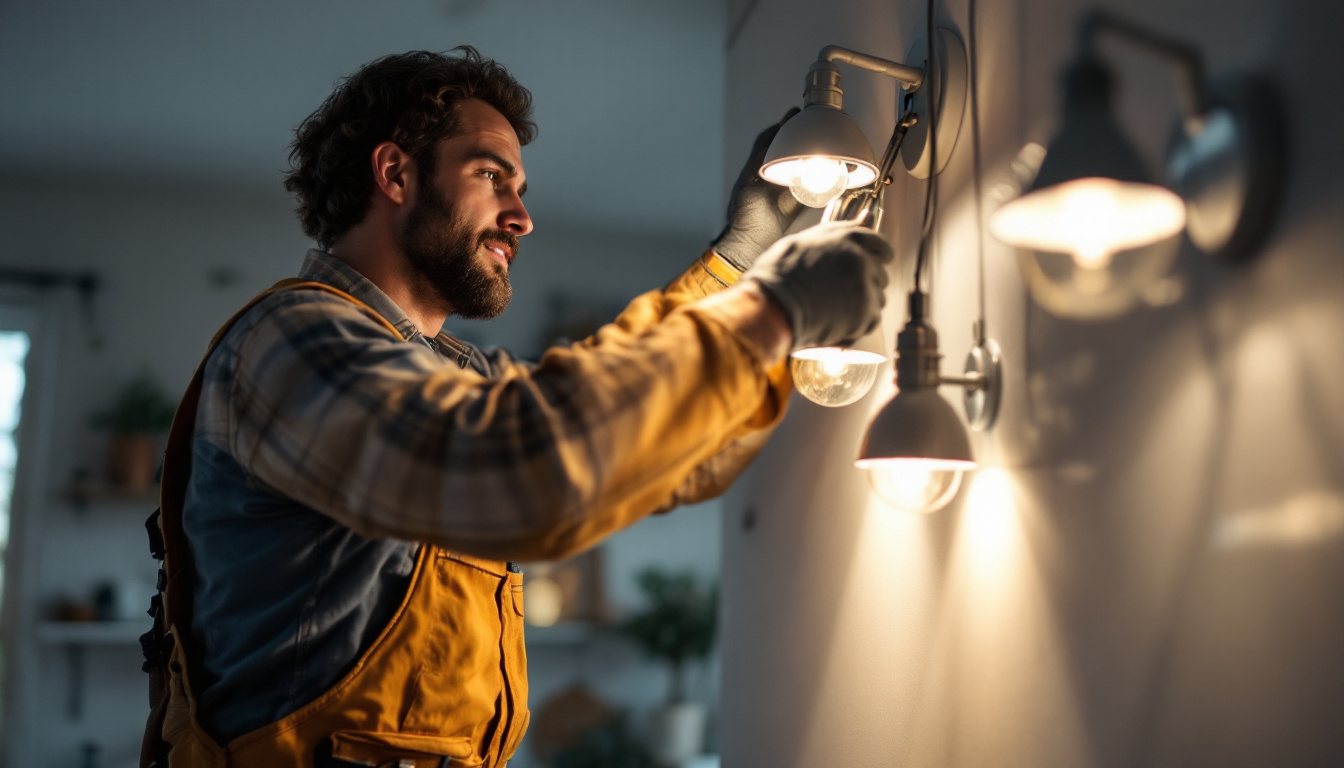
Flag lighting is an essential aspect of outdoor design that not only enhances the visibility of flags but also adds an aesthetic appeal to the surroundings. For lighting contractors, understanding the principles and best practices of flag lighting can lead to successful installations that meet clients’ expectations and elevate their projects. This guide provides insights into the various components of flag lighting, including types of fixtures, installation techniques, and maintenance considerations.
Proper flag lighting serves multiple purposes. It ensures that flags are visible during nighttime, honors the symbolism of the flags, and enhances the overall ambiance of the area. For contractors, recognizing these factors is crucial when designing a lighting plan.
One of the primary reasons for flag lighting is visibility. A well-lit flag can be seen from a distance, which is particularly important for flags displayed in public spaces or near roadways. This visibility not only honors the flag but also contributes to the safety of the area by preventing accidents that could occur if drivers are distracted by poorly lit surroundings. Additionally, a properly illuminated flag can serve as a landmark, guiding individuals and vehicles alike, especially in urban settings where navigation can be challenging. The strategic placement of lighting fixtures can enhance this effect, ensuring that the flag stands out against the night sky.
Flags often represent national pride, cultural heritage, or organizational identity. Properly illuminating a flag shows respect for what it symbolizes. Lighting contractors should approach flag lighting with an understanding of its significance, ensuring that the lighting design reflects the dignity of the flag being displayed. Moreover, the choice of lighting can also convey different messages; for instance, warm white lights may evoke a sense of tradition and reverence, while colored lights can celebrate specific occasions or cultural events. This nuanced approach to flag lighting not only enhances the visual appeal but also deepens the connection between the flag and its audience, fostering a greater appreciation for the values and history it represents. In this way, lighting becomes an integral part of the narrative surrounding the flag, enriching the experience for all who encounter it.
When selecting lighting fixtures for flag illumination, contractors have several options. Each type of fixture offers unique benefits and can be chosen based on the specific requirements of the installation site.
Floodlights are one of the most common choices for flag lighting. They provide a broad beam of light that can effectively illuminate large areas, making them suitable for flags that are displayed in open spaces. When positioning floodlights, it is essential to consider the angle and distance to ensure even lighting without creating harsh shadows. Furthermore, many floodlights are adjustable, allowing for flexibility in directing light where it is needed most. This adaptability can be particularly beneficial in environments where the flag may be subject to wind or movement, as it ensures that the illumination remains consistent and visually appealing.
For a more focused approach, spotlights can be used to highlight flags. These fixtures cast a narrow beam of light, which can create a dramatic effect. Spotlights are ideal for flags that are displayed on buildings or in areas where a more concentrated illumination is desired. Proper placement is crucial to avoid glare and ensure that the flag is the focal point of the lighting design. Additionally, spotlights can be equipped with dimmers or color filters, allowing for a range of effects that can enhance the flag’s appearance during different times of the day or for special occasions, such as national holidays or events.
LED lights have gained popularity in flag lighting due to their energy efficiency and longevity. They produce less heat compared to traditional lighting options, making them safer for prolonged use. Additionally, LED fixtures come in various colors and intensities, allowing for creative lighting designs that can enhance the visual appeal of the flag. The versatility of LED technology also means that they can be integrated with smart lighting systems, enabling remote control and programmable settings. This feature allows for dynamic lighting changes that can reflect different themes or celebrations, further elevating the flag’s presentation and significance in public spaces.
Successful flag lighting installations require careful planning and execution. Contractors must consider various factors, including fixture placement, power sources, and local regulations.
Determining the optimal placement of lighting fixtures is critical for effective flag illumination. Floodlights should be positioned at an angle that allows for maximum coverage of the flag while minimizing glare. For spotlights, the height and distance from the flag will affect the intensity of the light and the overall visual impact. It is often beneficial to conduct a site survey to assess the best locations for fixture installation.
When installing flag lighting, contractors must ensure that the fixtures are connected to a reliable power source. This may involve running electrical wiring underground or through conduits to protect it from the elements. It is essential to adhere to local electrical codes and regulations to ensure safety and compliance. Additionally, considering the use of timers or photocells can enhance energy efficiency by automatically turning lights on and off based on ambient light levels.
Before commencing any flag lighting project, contractors should familiarize themselves with local regulations and guidelines regarding outdoor lighting. Many municipalities have specific ordinances that dictate the type and intensity of lighting allowed in public spaces. Understanding these regulations can prevent potential issues and ensure that the installation is compliant.
Maintenance is a crucial aspect of flag lighting that can significantly impact the longevity and effectiveness of the installation. Regular upkeep ensures that lighting fixtures remain functional and that the flags are always displayed in the best possible light.
Conducting regular inspections of lighting fixtures is essential to identify any issues early on. This includes checking for burnt-out bulbs, damaged wiring, or misaligned fixtures. By addressing these problems promptly, contractors can ensure that the flag remains illuminated and that the installation continues to meet aesthetic and safety standards.
Over time, dirt, dust, and debris can accumulate on lighting fixtures, diminishing their effectiveness. Regular cleaning of the fixtures will help maintain optimal performance. Additionally, the flags themselves should be inspected and cleaned as necessary to ensure they remain vibrant and visually appealing.
Creating a comprehensive flag lighting plan involves several steps, from assessing the site to selecting the appropriate fixtures and ensuring compliance with regulations. A well-thought-out plan can enhance the overall impact of the flag display.
Before designing a lighting plan, a thorough site assessment is necessary. This includes evaluating the surrounding environment, identifying potential obstacles, and determining the best locations for lighting fixtures. Factors such as tree cover, building heights, and existing landscape features should be considered to ensure that the flag is adequately illuminated.
After assessing the site, the next step is to select the appropriate fixtures. Contractors should consider the type of lighting that best suits the flag and the environment. The design should also take into account the aesthetic appeal of the fixtures themselves, as they will contribute to the overall look of the installation.
Engaging with clients throughout the design process is vital. Understanding their vision and preferences can help tailor the lighting plan to meet their needs. Regular communication can also help manage expectations and ensure that the final installation aligns with the client’s goals.
Examining successful flag lighting projects can provide valuable insights for contractors. These case studies highlight various approaches to flag lighting and showcase the impact of thoughtful design and execution.
In many public parks, flag lighting serves to honor national and local flags while enhancing the beauty of the landscape. For instance, a park may feature multiple flags, each illuminated by strategically placed floodlights. This not only ensures visibility but also creates a welcoming atmosphere for visitors. The use of LED fixtures in these installations can provide energy savings while maintaining a bright and vibrant display.
Corporate buildings often display flags to represent their brand or affiliation. In one notable case, a corporate headquarters installed spotlights to illuminate their flag at night, creating a striking visual impact. The design included a programmable lighting system that allowed the company to adjust the intensity and color of the lights for special occasions, demonstrating the versatility of modern lighting solutions.
Residential properties can also benefit from flag lighting. Homeowners may choose to illuminate their flags as a sign of patriotism or pride in their heritage. A well-designed residential flag lighting system can enhance curb appeal while ensuring that the flag is visible and respected. Contractors can work with homeowners to create customized solutions that fit their specific needs and preferences.
Flag lighting is a vital component of outdoor design that enhances visibility, honors symbolism, and contributes to overall aesthetics. For lighting contractors, understanding the various types of fixtures, installation techniques, and maintenance considerations is essential for successful projects. By creating thoughtful lighting plans and engaging with clients, contractors can ensure that their flag lighting installations are both functional and visually appealing.
As the demand for quality flag lighting continues to grow, staying informed about the latest trends and technologies will be crucial for contractors looking to excel in this niche market. By embracing innovation and prioritizing client satisfaction, lighting contractors can elevate their services and contribute to the meaningful display of flags in various settings.
Ready to take your flag lighting projects to the next level? At LumenWholesale, we provide lighting contractors with the highest quality, spec-grade lighting products at prices that can’t be beaten. Say goodbye to local distributor markups and hello to a vast selection of reliable, high-performance lighting that meets the most stringent industry standards. With free shipping on bulk orders, you can stock up on premium lighting solutions without worrying about hidden fees or compromises. Elevate your flag lighting installations with the perfect blend of quality, affordability, and convenience at LumenWholesale — your destination for Wholesale Lighting at the Best Value.

Illuminate your outdoor spaces with expert insights from lighting contractors.

Discover the operational hours of solar lights and explore their top benefits for lighting contractors.

Discover the pitfalls that even seasoned lighting contractors can fall into with “Senor Light: Lighting Contractors’ Common Mistakes.” Learn how to avoid these errors to ensure flawless installations and enhance your project’s success..

Discover expert tips and insights on selecting and installing LED shop lights tailored for lighting contractors.